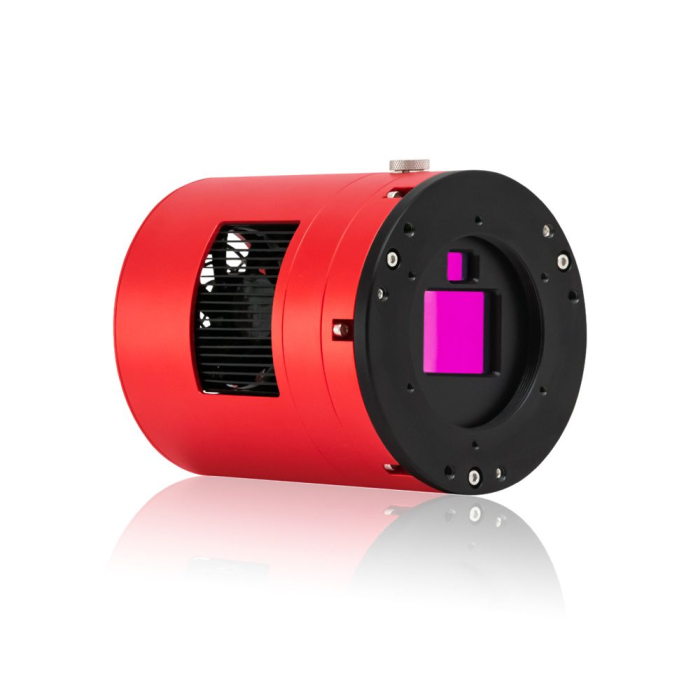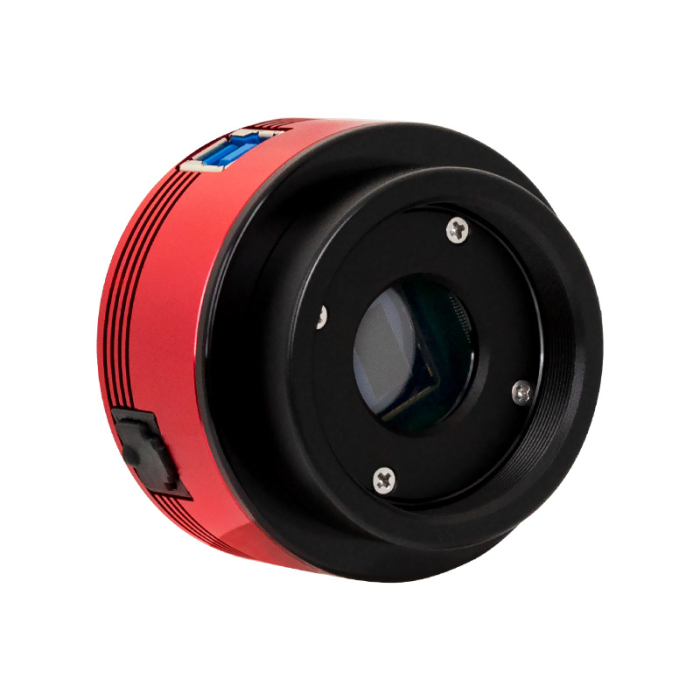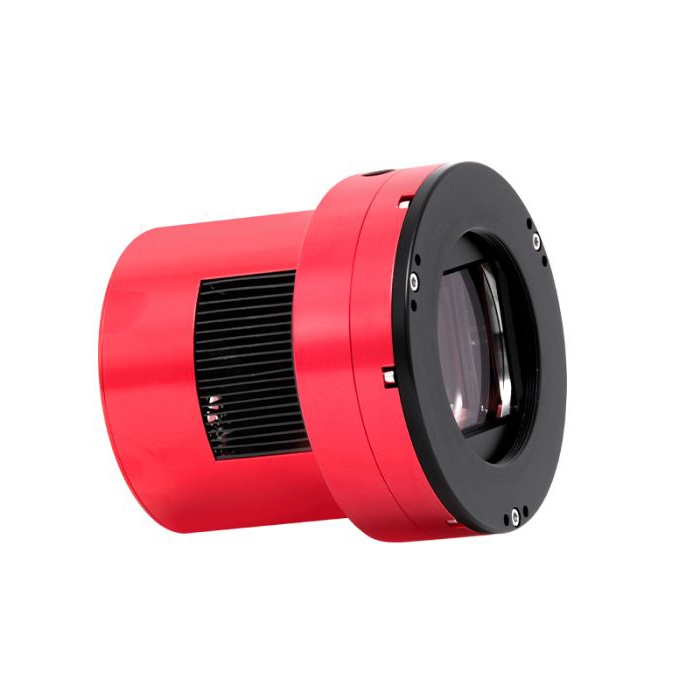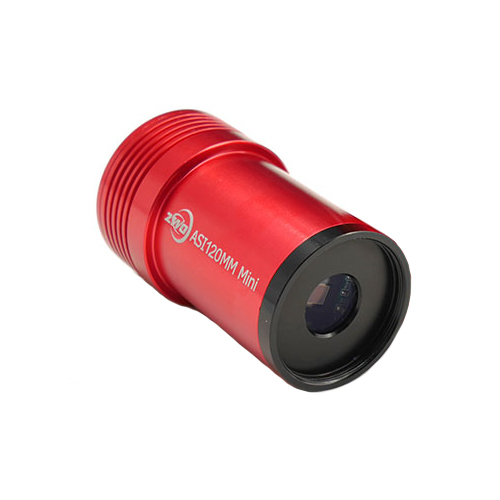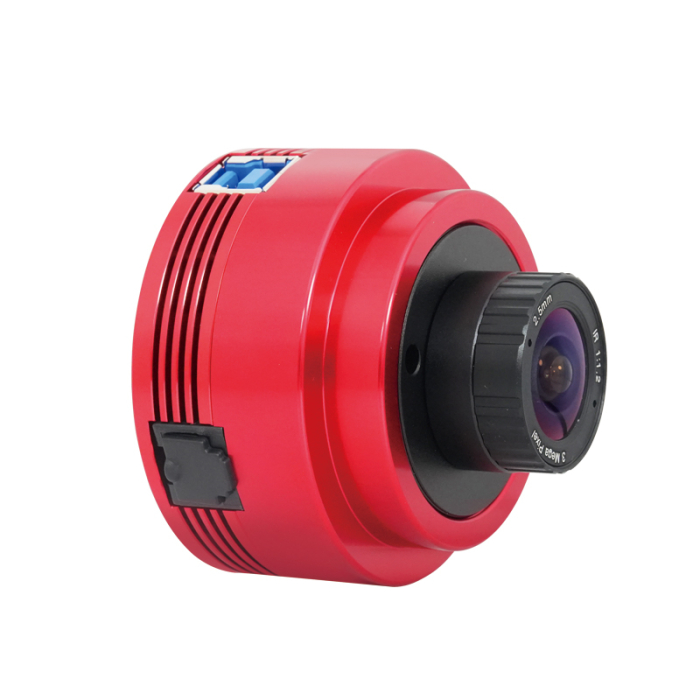ZWO Astronomy Cameras stand out in astrophotography for their seamless integration of cutting-edge CMOS sensor technology, high-speed data transfer, and cooling systems that minimize thermal noise. Unlike many competitors, ZWO specializes in lightweight, compact designs that do not sacrifice performance. Ideal for portable setups and remote imaging. Their ASI camera line, known for sharp planetary and deep-sky imaging, supports native USB 3.0 connectivity and offers models with mono and color sensors to suit different imaging needs. ZWO also leads ecosystem integration, offering dedicated accessories like the ASIAIR controller, filter wheels, and electronic focusers for a streamlined, all-in-one experience.
ZWO has merged its famous ASI2600MC Duo and ASIAir systems into one, offering a powerful imaging sensor, dedicated guide sensor, and ASIAir control system. This innovative combination simplifies setups and cable management, revolutionizing the astrophotography landscape. The ZWO ASI2600MC-Air Smart Camera video showcases its advanced astrophotography capabilities, including wireless control, low noise, high dynamic range, and real-world performance under the stars.
Highlighted Products
ZWO ASI2600MM Duo
With its 26MP Sony IMX571 primary sensor and 2MP SC2210 guide sensor, the ZWO ASI2600MM Duo offers a flexible monochrome photographic solution. With 14 stops of dynamic range, a 512MB memory buffer, an anti-dew heater, and -35°C TEC cooling, the ASI2600MM Duo is a formidable instrument for any astronomer's toolbox, capable of capturing crisp and detailed astrophotography photographs.
ZWO ASI482MC
The ZWO ASI482MC is characterized by a 2.07MP Sony sensor, low noise, 85% peak quantum efficiency, and a 12-stop dynamic range. It preserves dynamic range by default and minimizes readout noise when set to High Conversion Gain (HCG) mode. This guide camera is perfect for astrophotography, solar photography, and planet photography because of its 82 FPS speed and two connection modes.
ZWO ASI461MM Pro
The ZWO ASI461MM Pro camera uses a 3.4" CMOS Sony IMX461ALR-C sensor with a high resolution of 11,656 x 8750, making it a 100MP cooled camera. It has a full well capacity of 50.3Ke and can reach 198Ke in Bin2 mode. The camera also features a high conversion gain mode (HCG) to reduce read noise and maintain dynamic range during high gain imaging.
ZWO ASI120MM Mini
The ZWO ASI120MM Mini is a compact and affordable monochrome camera ideal for entry-level astrophotography and off-axis guiding. Its AR0130CS CMOS sensor delivers high sensitivity, low read noise, and nearly 80% peak quantum efficiency. Its lightweight design allows it to reach focus at the same point as an eyepiece. A perfect match for guiding setups. With a simple USB 2.0 Type-C and ST4 port for connectivity, plus a bundle of useful accessories. The ASI120MM Mini is a versatile, beginner-friendly option for anyone building or expanding their astrophotography gear.
ZWO ASI676MC
The ZWO ASI676MC is a high-performance color astronomy camera designed for planetary, lunar, and all-sky imaging. It features Sony’s 12.6MP IMX676 CMOS sensor with STARVIS 2 technology for superb low-light sensitivity, minimal read noise (as low as 0.56e), and a compact square format ideal for mosaics. With a 2µm pixel size, 83% peak QE, HCG mode, 256MB DDR3 buffer, and zero amp glow, this camera delivers sharp, clean results even in demanding conditions. Its USB 3.0 and ST4 ports support fast data transfer and guiding.
More About This Category
When selecting an astronomy camera, achieving the most excellent photo of space objects requires careful consideration. Professional and amateur astronomers now prefer ZWO cameras for several reasons. This study thoroughly analyzes the unique characteristics of ZWO cameras, their applications in astronomy, and market data.
Which specific models are recommended for beginners?
ZWO provides a variety of primary cameras, including the ASI120MC-S for beginners, the ASI294MC Pro for deep-sky photography, and the ASI1600MM Pro for deep-sky enthusiasts. The ASI120MC-S is preferred for planetary imaging due to its affordability, simplicity, and exceptional performance. Community-required picture processing techniques, troubleshooting advice, and training are also available.
Why is it that ZWO cameras have better technology than others for astronomy?
Modern ZWO cameras use susceptible CMOS sensors with low noise and a high quantum efficiency. These features are helpful for astro imaging, which aims to observe very dim objects in exquisite detail. The cameras' capability for HDR makes it possible to capture subjects in the frame that are both extremely bright and highly faint simultaneously without sacrificing image quality. Specifically, it has a cooling mechanism to control sensor temperature and reduce thermal noise. This is important in deep-sky astrophotography, where heat-up and noise degeneration may impact it, because it produces higher-quality, more detailed photographs of dim objects.
How do ZWO cameras fare in astrophotography compared to DSLRs?
ZWO cameras, unlike DSLR cameras, are designed for astrophotography. They are less noisy, more sensitive, and can capture long exposures without generating significant heat noise. They also have enhanced compatibility with astrophotography software and enhanced control over photographic characteristics.
ZWO cameras require regular cleaning and thermal management to ensure longevity and optimal performance. Regular cleaning prevents dust accumulation and maintains high-quality images. Thermal conditions can be managed using built-in cooling systems, software tools, ventilation, and cool, dry storage.Updating the firmware and software is necessary occasionally since it brings bug fixes, performance, and new features. The proper transport, the correct mounting of the camera, dust caps, and power supply management are guaranteed to help you maintain your ZWO camera for a more extended period.
Because of its significant market presence, advanced image technology, adaptability, and cooling systems, ZWO cameras have established a standard in astrophotography. Their community support and compatibility with a wide range of telescopes and software make them an excellent option for beginning and seasoned astronomers. ZWO cameras offer the resources required to investigate and record the wonders of the cosmos, whether by capturing finely detailed photos of planets or deep-sky objects.
The ZWO Camera series has gained immense popularity for its excellent performance in astrophotography. It offers clear, brilliant images and superior features for amateur and professional astronomers.
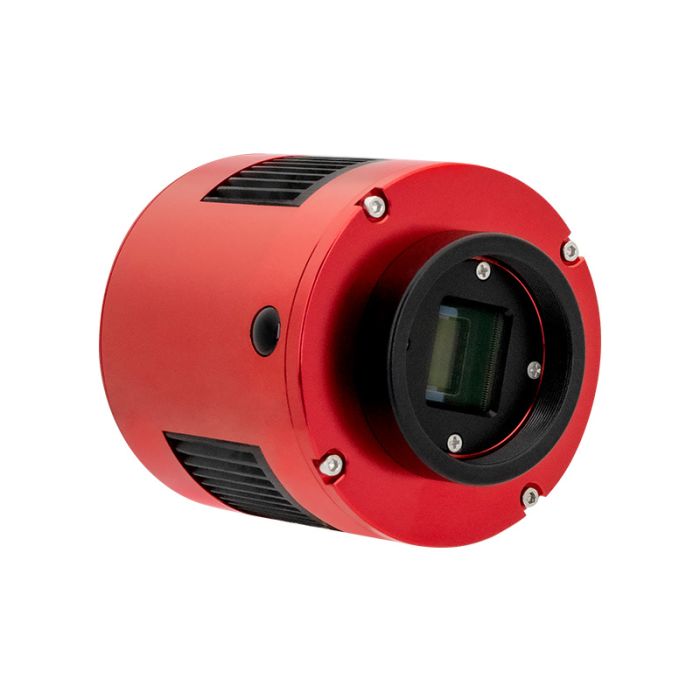
ZWO ASI183MM Pro USB3.0 Cooled Monochrome Camera is developed to be highly efficient for astrophotography regarding the ZWO camera. This is complemented by a top-shelf 20-megapixel Sony IMX180CLK-J sensor, which ensures that the camera has great sensitivity and next to no noise. It achieves 84% peak quantum efficiency and has a read-out noise of 1. 6e. The backside-illuminated sensor and a massive, healthy amount of 15Ke capacity create detailed and minimal noise pictures. In addition, integrated into the camera, the two-stage TEC cooling reduces noise when the temperature is between 30 ° C and 40 ° C. To ensure fast transfer of files, the camera comes with a USB 3—a 0 connector and a 256MB DDR3 memory buffer. Astrophotographers prefer the ASI183MM Pro because the kit includes all the adapters you will ever require for immediate use. To learn more about performance insights, read the article “Understanding ZWO Camera Charts and Graphs”.
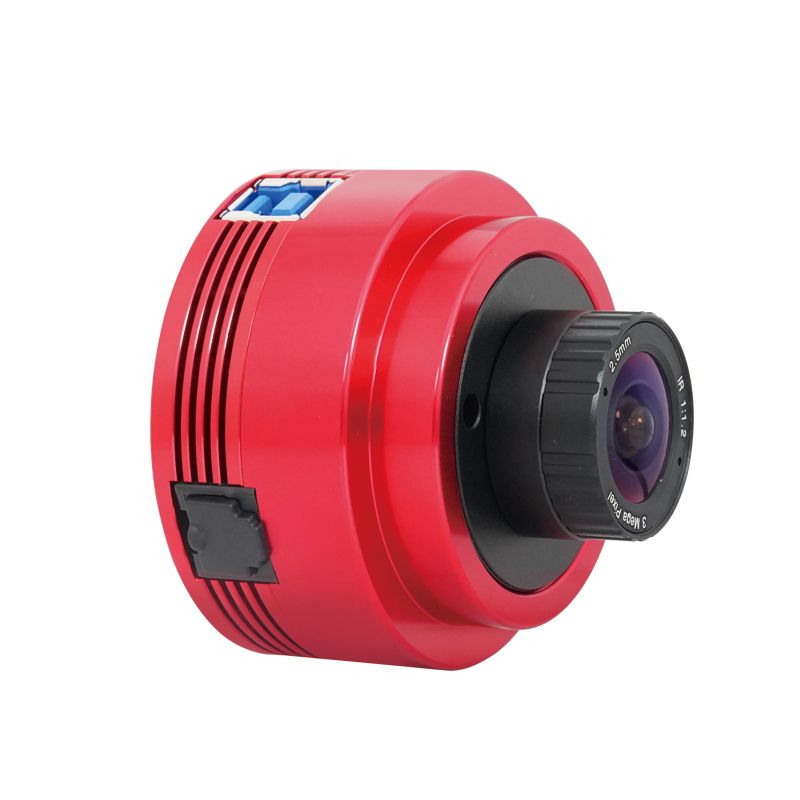
ZWO ASI676MC Color Astronomy Camera
ZWO's ASI676MC is a color planetary camera with compassion that is perfect for taking pictures of planets, moons, and meteors. It has a 12.6MP square, back-illuminated Sony IMX676 sensor with STARVIS 2 technology, which offers exceptional clarity and great sensitivity. The sensor produces rich, high-resolution images because of its 3552x3552 pixel array and 2um pixel size. The camera's meticulous wiring eliminates amp glow, and the UV/IR-cut coated window lessens infrared interference. In addition, the ASI676MC has a USB 3.0 connector for dependable data transfer, a 256MB memory buffer, and a large Conversion Gain (HCG) mode for an extensive dynamic range. Its many ports and adaptable design make it ideal for any astrophotographer.

